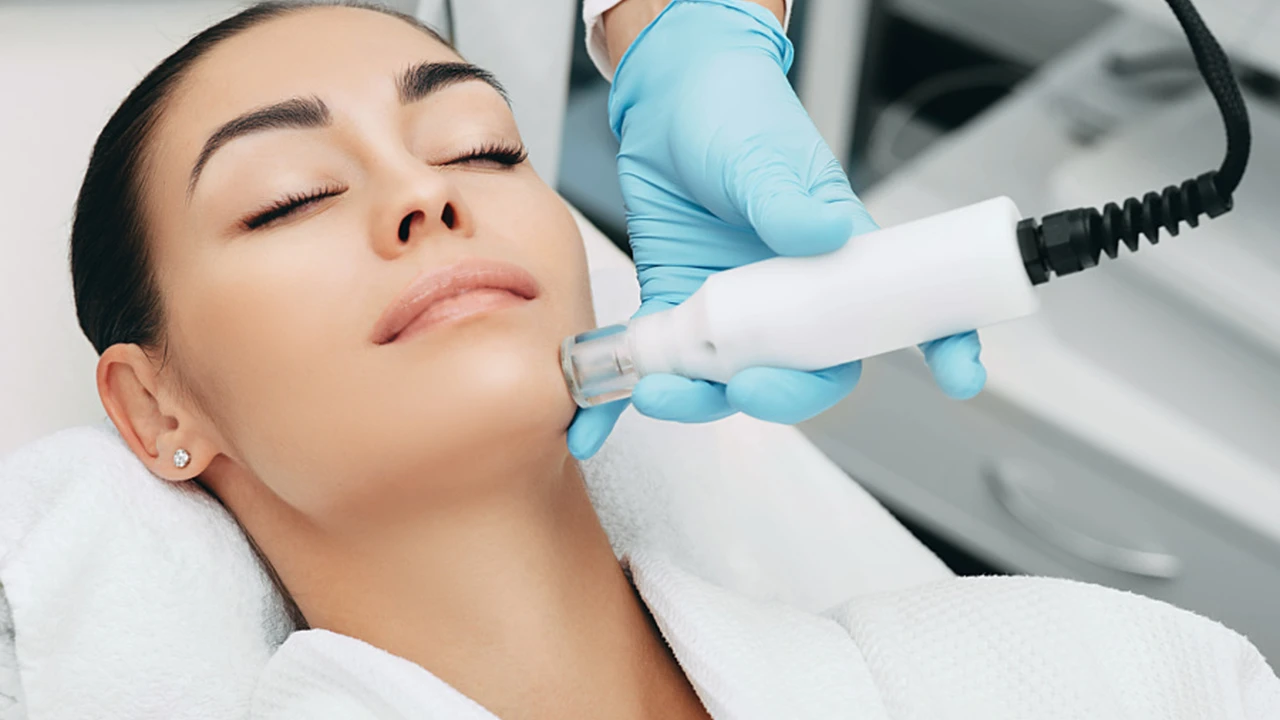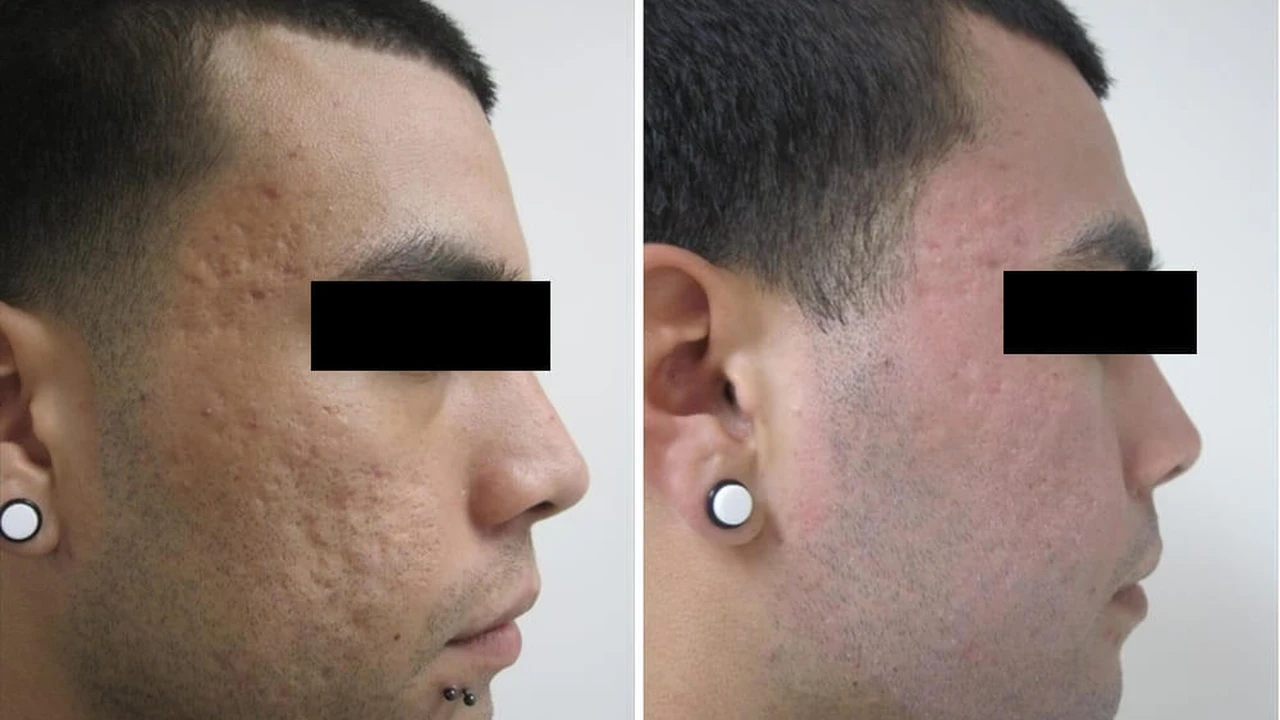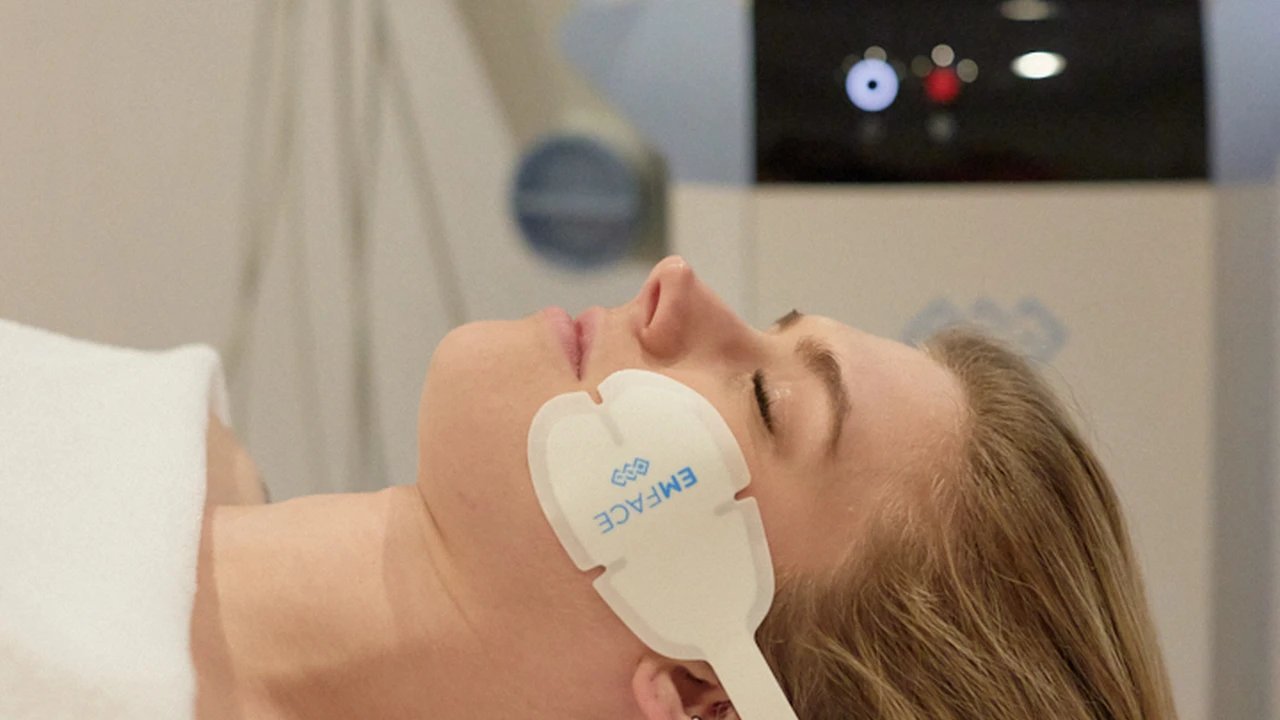Eyelid Surgery (Blepharoplasty): A Comprehensive Guide
-A-Comprehensive-Guide.webp)
Facelift procedures are a cornerstone of surgical facial rejuvenation offering significant improvements in facial appearance. This comprehensive guide explores the nuances of facelift surgery from different techniques to recovery expectations and product recommendations.
Understanding Facelift Surgery What is a Rhytidectomy
The term "facelift" or rhytidectomy encompasses a range of surgical procedures designed to address visible signs of aging in the face and neck. These signs often include sagging skin, deep wrinkles, and loss of facial volume. A facelift aims to reposition underlying tissues, remove excess skin, and tighten the remaining skin to create a more youthful and refreshed appearance. The specific approach is tailored to the individual's anatomy, goals, and the extent of aging present.
Types of Facelift Procedures Exploring Surgical Options
Several types of facelift procedures exist each targeting different areas and degrees of correction:
Traditional Facelift Comprehensive Facial Rejuvenation
A traditional facelift addresses the mid-face, lower face, and neck. The incision typically starts at the temples, extends around the ear, and ends in the lower scalp. This allows the surgeon to lift and reposition underlying muscles and tissues (SMAS layer), remove excess skin, and redrape the skin for a smoother contour. It provides the most dramatic and long-lasting results, ideal for individuals with significant sagging and deep wrinkles.
Mini Facelift Limited Incision Approach
A mini facelift is a less invasive procedure with shorter incisions, usually around the ear. It focuses primarily on the lower face and jowls, making it suitable for individuals with mild to moderate sagging. The recovery time is generally shorter than a traditional facelift, but the results are less dramatic.
Mid Facelift Targeting the Cheek Area
A mid-facelift specifically targets the cheek area, addressing sagging cheeks and nasolabial folds. The incision is often made inside the mouth or through the lower eyelid. This procedure lifts the cheek fat pads and restores volume to the mid-face, creating a more youthful and refreshed appearance.
SMAS Facelift Addressing the Underlying Structure
The SMAS (Superficial Musculoaponeurotic System) facelift involves manipulating the deeper layers of the face, specifically the SMAS layer. This layer supports the skin and fat, and by tightening it, surgeons can achieve a more significant and longer-lasting lift. SMAS facelifts can be combined with other facelift techniques to address various areas of the face.
Thread Lift A Minimally Invasive Option
While technically not a surgical facelift, thread lifts offer a minimally invasive alternative. Threads with small barbs are inserted under the skin to lift and reposition sagging tissues. The results are subtle and temporary, lasting typically 12-18 months. Thread lifts are best suited for individuals with minimal sagging who are looking for a quick and non-surgical option.
The Facelift Consultation What to Expect
The initial consultation is a crucial step in the facelift process. During this consultation, the surgeon will evaluate your facial structure, skin quality, and overall health. They will discuss your goals and expectations, explain the different facelift options, and recommend the most suitable procedure for your individual needs. Be prepared to discuss your medical history, including any medications you are taking. The surgeon will also take photographs of your face for planning and documentation purposes. Asking questions and openly communicating your concerns is essential for a successful outcome.
Preparing for Facelift Surgery Pre-Operative Instructions
Following pre-operative instructions carefully is vital for a smooth surgery and recovery. These instructions may include:
- Stopping smoking several weeks before surgery, as smoking impairs blood flow and healing.
- Avoiding blood-thinning medications, such as aspirin and ibuprofen, as they can increase the risk of bleeding.
- Avoiding certain supplements that can interfere with anesthesia or increase bleeding.
- Arranging for someone to drive you home after surgery and stay with you for the first 24 hours.
- Preparing your home for recovery, including having comfortable seating, plenty of pillows, and easy access to food and medications.
The Facelift Procedure A Step-by-Step Overview
The facelift procedure typically involves the following steps:
- Anesthesia: You will receive either general anesthesia or intravenous sedation. The choice depends on the extent of the surgery and your preferences.
- Incision: The surgeon will make incisions based on the chosen facelift technique. Incisions are typically placed in discreet locations, such as along the hairline and around the ear.
- Tissue Manipulation: The surgeon will lift and reposition underlying muscles and tissues (SMAS layer). Excess fat may be removed or redistributed.
- Skin Redraping: The skin is redraped over the newly contoured tissues, and excess skin is removed.
- Closure: The incisions are closed with sutures or skin adhesives.
- Bandaging: A bandage is applied to protect the incisions and minimize swelling.
Facelift Recovery What to Expect After Surgery
The recovery period after a facelift varies depending on the extent of the surgery. You can expect some swelling, bruising, and discomfort. Pain medication can help manage the discomfort. Other common experiences during recovery include:
- Swelling and Bruising: Swelling and bruising are most pronounced in the first few days after surgery and gradually subside over several weeks. Applying cold compresses can help reduce swelling.
- Pain and Discomfort: You may experience some pain and discomfort, which can be managed with pain medication prescribed by your surgeon.
- Numbness: Numbness in the face is common and usually resolves within a few months.
- Sutures: Sutures are typically removed within 5-10 days after surgery.
- Activity Restrictions: You will need to avoid strenuous activities and heavy lifting for several weeks after surgery.
- Sun Protection: Protecting your skin from the sun is crucial during recovery to prevent scarring and hyperpigmentation.
Potential Facelift Complications Understanding the Risks
As with any surgical procedure, facelift surgery carries some risks. These risks are relatively rare but can include:
- Hematoma: A collection of blood under the skin.
- Infection: Although rare, infection can occur.
- Nerve Damage: Nerve damage can cause temporary or permanent numbness or weakness in the face.
- Poor Wound Healing: Poor wound healing can lead to scarring.
- Skin Necrosis: Skin necrosis, or skin death, is a rare but serious complication.
- Asymmetry: Asymmetry, or unevenness, of the face.
- Unsatisfactory Results: Unsatisfactory results, such as persistent sagging or an unnatural appearance.
Choosing a qualified and experienced surgeon can significantly reduce the risk of complications.
Facelift Results What to Expect Long Term
The results of a facelift can be long-lasting, typically lasting 10-15 years. However, the aging process continues, and the skin will gradually lose elasticity over time. Factors such as genetics, lifestyle, and sun exposure can affect the longevity of the results. Maintaining a healthy lifestyle, protecting your skin from the sun, and considering non-surgical treatments can help prolong the results of your facelift.
Non-Surgical Facelift Alternatives Exploring Options
For individuals who are not ready for surgery or who want to maintain the results of a facelift, several non-surgical alternatives are available:
- Botulinum Toxin Injections (Botox, Dysport): These injections relax facial muscles, reducing the appearance of wrinkles and fine lines.
- Dermal Fillers (Juvederm, Restylane): These fillers restore volume to the face, filling in wrinkles and plumping up sagging areas.
- Laser Skin Resurfacing: This treatment improves skin texture and reduces wrinkles by removing the outer layers of skin.
- Ultherapy: This non-invasive treatment uses ultrasound energy to lift and tighten the skin.
- Radiofrequency Skin Tightening: This treatment uses radiofrequency energy to stimulate collagen production and tighten the skin.
Facelift Cost Factors Influencing the Price
The cost of a facelift varies depending on several factors, including:
- Surgeon's Fees: The surgeon's fees will vary based on their experience and location.
- Anesthesia Fees: The cost of anesthesia depends on the type of anesthesia used and the length of the surgery.
- Facility Fees: The facility fees cover the cost of the operating room and other facility-related expenses.
- Pre-Operative and Post-Operative Care: The cost of pre-operative and post-operative appointments and medications.
It's important to discuss the cost of the procedure with your surgeon during the consultation.
Facelift Surgeon Selection Choosing the Right Professional
Choosing a qualified and experienced surgeon is crucial for a successful facelift. Look for a surgeon who is board-certified in plastic surgery or facial plastic surgery and has extensive experience performing facelift procedures. Review before and after photos of the surgeon's patients to assess their aesthetic sense. Read online reviews and testimonials to get a sense of the surgeon's reputation. Schedule consultations with several surgeons before making a decision. During the consultation, ask questions about the surgeon's experience, qualifications, and approach to facelift surgery. Make sure you feel comfortable and confident with the surgeon you choose.
Facelift Products Recommendations for Optimal Results
Several products can help enhance and maintain the results of a facelift. These products focus on skin hydration, sun protection, and collagen stimulation.
Skinceuticals CE Ferulic Antioxidant Serum
Description: A potent antioxidant serum containing vitamin C, vitamin E, and ferulic acid. It protects the skin from free radical damage, improves skin tone, and reduces the appearance of wrinkles.
Use Case: Apply in the morning after cleansing and toning. Use before sunscreen for enhanced protection.
Product Comparison: While other antioxidant serums exist, Skinceuticals CE Ferulic is widely regarded as the gold standard due to its patented formula and proven efficacy. Competitors like Timeless Skin Care Vitamin C Serum offer a more affordable option but may not provide the same level of antioxidant protection.
Details: Price: Approximately $166. Ingredients: L-Ascorbic Acid, Alpha Tocopherol, Ferulic Acid.
EltaMD UV Clear Broad-Spectrum SPF 46 Sunscreen
Description: A broad-spectrum sunscreen that protects the skin from UVA and UVB rays. It is oil-free, non-comedogenic, and suitable for sensitive skin.
Use Case: Apply liberally to the face and neck every morning, even on cloudy days. Reapply every two hours when exposed to the sun.
Product Comparison: EltaMD UV Clear is a popular choice among dermatologists due to its lightweight formula and effective sun protection. Other sunscreens like Supergoop! Unseen Sunscreen offer a similar invisible finish, but EltaMD is often preferred for its suitability for acne-prone skin.
Details: Price: Approximately $39. Ingredients: Zinc Oxide, Octinoxate, Niacinamide.
Revision Skincare Nectifirm Advanced
Description: A neck cream that helps to firm and tighten the skin on the neck and décolletage. It contains peptides, antioxidants, and other ingredients that improve skin elasticity and reduce the appearance of wrinkles.
Use Case: Apply to the neck and décolletage twice daily after cleansing and toning.
Product Comparison: Revision Skincare Nectifirm Advanced is a highly regarded neck cream known for its effective firming and tightening properties. Other neck creams like StriVectin TL Advanced Tightening Neck Cream offer similar benefits, but Revision Skincare is often preferred for its comprehensive ingredient list and noticeable results.
Details: Price: Approximately $89. Ingredients: Peptides, Ceramides, Vitamin E.
SkinMedica TNS Essential Serum
Description: A dual-chamber serum that contains TNS Recovery Complex, a blend of growth factors, and APS Corrective Complex, a blend of antioxidants and peptides. It improves skin tone, texture, and elasticity.
Use Case: Apply to the face and neck twice daily after cleansing and toning.
Product Comparison: SkinMedica TNS Essential Serum is a premium serum known for its potent blend of growth factors and antioxidants. Other growth factor serums like Neocutis Bio Serum Firm Rejuvenating Growth Factor Treatment offer similar benefits, but SkinMedica is often preferred for its comprehensive approach to skin rejuvenation.
Details: Price: Approximately $281. Ingredients: Human Fibroblast Conditioned Media, Palmitoyl Pentapeptide-4, Antioxidants.
Maintaining a Youthful Appearance Post Facelift Lifestyle Tips
Maintaining a healthy lifestyle can significantly contribute to the longevity of your facelift results.
- Sun Protection: Consistent sun protection is crucial. Wear sunscreen daily, even on cloudy days, and avoid prolonged sun exposure.
- Healthy Diet: A balanced diet rich in fruits, vegetables, and lean protein provides essential nutrients for skin health.
- Hydration: Staying hydrated helps maintain skin elasticity and plumpness.
- Regular Exercise: Regular exercise improves circulation and overall health, contributing to a youthful appearance.
- Avoid Smoking: Smoking damages collagen and elastin, accelerating the aging process.
- Skincare Routine: Maintain a consistent skincare routine with products that hydrate, protect, and stimulate collagen production.
- Non-Surgical Treatments: Consider non-surgical treatments like Botox and fillers to maintain the results of your facelift.
Facelift Frequently Asked Questions Addressing Common Concerns
Many individuals considering a facelift have questions and concerns. Here are some frequently asked questions:
How long does a facelift last
The results of a facelift typically last 10-15 years, but the aging process continues.
Is a facelift painful
You can expect some discomfort after a facelift, but pain medication can help manage it.
Will I have visible scars after a facelift
The incisions are typically placed in discreet locations, and the scars usually fade over time.
How long is the recovery period after a facelift
The recovery period varies depending on the extent of the surgery, but you can expect to take 2-4 weeks off from work.
What is the best age to get a facelift
The best age to get a facelift depends on individual factors, such as the extent of aging and overall health.
Can a facelift be combined with other procedures
Yes, a facelift can be combined with other procedures, such as eyelid surgery or a brow lift.
How much does a facelift cost
The cost of a facelift varies depending on several factors, including the surgeon's fees, anesthesia fees, and facility fees.
The Future of Facelift Surgery Innovations and Advancements
The field of facelift surgery is constantly evolving with new innovations and advancements. These advancements aim to improve results, reduce recovery time, and minimize complications.
- Deep Plane Facelift: This technique involves lifting the deeper layers of the face, providing a more natural and long-lasting result.
- Composite Facelift: This technique combines a facelift with other procedures, such as fat grafting, to restore volume and improve facial contours.
- Endoscopic Facelift: This minimally invasive technique uses an endoscope to lift and tighten the facial tissues through small incisions.
- Stem Cell Facelift: This experimental technique uses stem cells to regenerate damaged tissues and improve skin quality.
These advancements hold promise for even more effective and less invasive facelift procedures in the future.
:max_bytes(150000):strip_icc()/277019-baked-pork-chops-with-cream-of-mushroom-soup-DDMFS-beauty-4x3-BG-7505-5762b731cf30447d9cbbbbbf387beafa.jpg)






